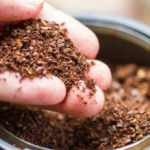Lime tree are vibrant, fragrant, and fruitful additions to any garden or backyard. Because of their refreshing citrus aroma and flavorful produce, they have become a favorite among homeowners and farmers alike.
Whether you’re eyeing a dwarf lime_tree for a small patio or considering a Persian lime_tree for a full orchard, these trees bring more than just beauty — they offer a sensory experience. Moreover, with the right lime tree care, anyone can grow their own citrus delight and enjoy fresh limes right from the source.
🌱 Types of Lime Trees You Can Grow
 Choosing the right lime_tree begins with understanding the different varieties available. Each type offers unique characteristics in flavor, size, and growing conditions.
Choosing the right lime_tree begins with understanding the different varieties available. Each type offers unique characteristics in flavor, size, and growing conditions.
Key Lime Tree
-
Small, aromatic limes often used in pies and cocktails
-
Best suited for warm, tropical climates
-
Compact size makes them great for container growing
Finger Lime Tree
-
Known as “citrus caviar” because of its pearl-like pulp
-
Native to Australia
-
Ideal for gourmet dishes and garnishing
Kaffir Lime Tree
-
Distinctive bumpy skin
-
Leaves are widely used in Thai and Southeast Asian cooking
-
Requires full sunlight for optimal growth
Dwarf Lime Tree
-
Perfect for patios, balconies, and small spaces
-
Grows well in pots
-
Offers the same yield as full-sized trees if cared for properly
Mexican Lime Tree (Also called West Indian lime)
-
Very juicy with a strong aroma
-
Commonly used in Latin American cuisine
-
Heat-loving and frost-sensitive
Persian Lime Tree
-
Large, seedless fruits
-
More cold-tolerant than key limes
-
Commercially grown for juice production
Lemon Lime Tree (Hybrid)
-
A combination that offers both lemon and lime fruits
-
Requires well-draining soil and ample sun
-
Excellent choice for varied citrus needs
🛒 Where to Find Lime Tree for Sale
If you’re ready to grow your own citrus tree, you’re probably searching for a reliable place to find a lime tree for sale. Fortunately, many online nurseries and local garden centers offer various lime tree types, including dwarf and Persian varieties.
-
Local Nurseries – Good for regional climate-specific advice
-
Online Plant Shops – Offer wider selections including rare types like finger lime trees
-
Home Improvement Stores – Convenient, but limited to common varieties
While buying online, always check:
-
Reviews and ratings
-
Root health and size
-
Climate compatibility
🌿 How to Care for a Lime Tree
Taking care of a lime_tree doesn’t have to be complicated. With consistency and a few simple rules, your lime_tree can thrive beautifully.
🌞 Sunlight Requirements
Lime_trees need at least 6–8 hours of full sunlight each day. Therefore, it’s essential to plant or place your tree where it gets uninterrupted exposure.
💧 Watering Schedule
Watering should be consistent but not excessive. As a rule:
-
Water deeply once or twice a week
-
Let the top inch of soil dry before watering again
-
Avoid overwatering to prevent root rot
🌱 Soil & Fertilization
-
Use well-draining, slightly acidic soil
-
Fertilize every 6–8 weeks during growing seasons (spring and summer)
-
Use citrus-specific fertilizer for best results
✂️ Pruning Tips
Pruning improves airflow and fruit quality:
-
Remove dead or overcrowded branches
-
Prune in early spring
-
Keep the canopy open for better sunlight penetration
🏝️ Experience Lime Tree Bay Resort: Nature Meets Relaxation

If you’re not just about planting but also want to enjoy the natural vibe of lime_trees, Lime Tree Bay Resort is a hidden gem worth exploring. Located in the Florida Keys, this coastal resort is surrounded by tropical trees and, as the name suggests, plenty of lime_trees too.
It’s the perfect place to:
-
Relax under a lime_tree
-
Enjoy tropical drinks with fresh lime slices
-
Get inspiration for your garden design
Moreover, Lime_Tree Bay Resort offers a stunning view of the sunset with the aroma of lime_trees adding to the serene atmosphere. So, whether you’re planning a trip or just gathering landscape ideas, it’s worth the experience.
🌼 Benefits of Growing a Lime Tree
Still unsure if a lime_tree is right for you? Here are a few reasons that might change your mind:
-
🍋 Fresh fruit year-round
-
🌿 Aromatic garden addition
-
🧘 Stress-relieving gardening activity
-
🌎 Environmentally friendly
-
🏠 Boosts property aesthetic
Furthermore, lime_trees aren’t just beautiful — they’re productive. With proper lime_tree care, you can enjoy organic, homegrown citrus while creating a serene environment around you.
🌳 Bio Table
| Feature | Detail |
|---|---|
| Botanical Name | Citrus aurantiifolia |
| Popular Types | Key, Persian, Kaffir, Dwarf |
| Sunlight Needs | Full Sun (6–8 hours daily) |
| Watering | Weekly, deep soaking |
| Soil Type | Well-draining, slightly acidic |
| Best Use | Culinary, Drinks, Landscaping |
| Container Grown | Yes (Dwarf varieties) |
| Hardiness Zones | USDA Zones 9–11 |
🌟 Conclusion
The lime_tree is more than just a citrus plant — it’s a gateway to flavor, beauty, and relaxation. Whether you’re planting a key lime_tree for its zest, a dwarf lime_tree for a cozy space, or simply dreaming of the lush views at Lime_Tree Bay Resort, there’s something magical about this citrus gem.
So go ahead — plant your tree, care for it, and let nature do the rest.
FAQs
1. What is the best lime tree for small spaces?
The dwarf lime_tree is perfect for balconies and patios, as it grows well in containers and still produces plenty of fruit.
2. How often should I water my lime tree?
Water deeply once or twice a week. Let the topsoil dry out between waterings to avoid root issues.
3. Can lime trees grow indoors?
Yes, especially dwarf varieties. However, they need bright sunlight and occasional time outdoors for best results.
4. What are signs my lime tree needs help?
Yellowing leaves, slow growth, or lack of fruit may indicate overwatering, poor soil, or lack of nutrients.
5. Is Lime Tree Bay Resort named after real lime trees?
Yes! The resort celebrates the tropical theme with real lime_trees throughout the property, adding to its island vibe.






